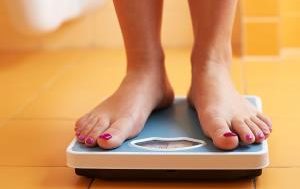 © Getty Images Image: Woman cooking in the kitchen
© Getty Images Image: Woman cooking in the kitchen
Call it what you will: An eating plan, a lifestyle, a diet, a philosophy, but few things garner such heated debate as how to lose weight. The truth is, whether you’re on a low-carb keto program, devoted to the Paleo lifestyle, all in on the Whole 30, or remain committed to low-fat eating, these plans have more in common than you think. What’s more, follow any one of them religiously, and you’ll likely notice results.
In one recent study, Stanford University researchers put more than 600 overweight adults on either a healthy low-fat or low-carb diet. It turns out, participants had similar levels of weight loss success on each plan. Researchers looked for clues (such as insulin levels and gene patterns) to see if there are any factors that might make someone more successful on either diet, but after combing through the data, they were not able to make any connections.
What they did note is that eaters on both plans followed some really simple advice. This advice is the common thread among all healthful weight loss and dietary approaches. So if you’re looking for the best way to lose weight, focus on these three commandments of healthy eating.
1. Eat more vegetables
Considering that 1 in 10 Americans fail to meet their produce requirements, it’s pretty safe to say you need to eat more vegetables. And no matter what food philosophy you subscribe to, vegetables are a big part of the program. Vegetables have a lot going for them: They fill you up for very few calories, and they flood your body with the nutrients it needs to fight diseases, like heart disease, type 2 diabetes, and some cancers.
If you follow food trends, you might think you have to fall in love with cauliflower and kale to reap all the rewards that vegetables offer, but that isn’t the case. Be it broccoli, carrots, red peppers, cabbage, spinach, asparagus, brussels sprouts or any other vegetable, the idea is to eat a variety of them and find plenty of ways to enjoy their goodness. So if you just can’t stomach steamed Brussels sprouts, try them roasted, or give sautéed brussels sprouts a try. If raw zucchini isn’t your thing, see if you like it spiralized into noodles or grilled on a grill pan.
I’ve converted countless veggie haters into veggie eaters, and upping your vegetable game can have tremendous payoffs in how you look and feel.
2. Eat less sugar
You can blame biology for your sweet tooth. We’re hardwired to have a preference for sweets, and this drive is universal and begins early on, according to research on the subject. Sugar makes food taste good, so food companies add it to everything from breads to soups to salad dressings to cereals, yogurts, and more. This adds up to way too much sugar!
On average, Americans consume more than 19 teaspoons of sugar per day — far in excess of the American Heart Association’s 6 teaspoon limit for women and 9 teaspoon limit for men. This is not doing your waistline any favors, which is why every weight-loss plan advocates eating less sugar.
There has been some confusion that a low-fat diet means you can feast on low-fat cookies and other treats, but this, again, is the food manufacturers’ influence. The true intent of low-fat dining is to eat more healthful foods that are naturally low in fat: fruits, vegetables, beans, lean proteins, and whole grains.
There is plenty of research to support a low-fat lifestyle, just as there is strong evidence that you can lose weight by cutting carbs. Different approaches work for different people, but if you want to slim down, cutting back on added sugars is consistent advice across all programs.
One more note on added sugars: Whether you call it agave, cane juice, maple syrup, brown rice syrup, fruit juice concentrate, date sugar, or any of the 61 names for added sugar, they all spell trouble for your health and your waistline.
3. Eat more whole foods
I’m in favor of any program that promotes whole foods over hyper-processed fare, and this is one thing the popular diet plans can agree on. Overly processed foods have been linked to weight gain, perhaps because many unhealthy packaged foods (think: potato chips, ice cream, frozen pizza, cookies, and the like) lack the fiber found in many whole foods, including vegetables. Fiber helps fill us up, and research suggests that by simply adding more fiber to your menu, you can lose weight nearly as well as a more complicated approach. Consistently choosing whole foods is one way to do this.
Newer research suggests it’s easier to overeat processed foods. Think of how long it takes to eat a fast-food sandwich compared to a plate of fish, salad, broccoli and brown rice. When researchers conducted a similar experiment, matching meals for calories, carbs, protein, fat and sugar, and allowing people to eat as much (or as little) as they liked, they found that people ate about 500 calories more per day when eating heavily processed foods — and they gained an average of two pounds during the short study period. They ate more, ate faster, and experienced some changes in their appetite-regulating hormones that can make it harder to feel full. But those same folks lost about two pounds when given the whole foods diet, suggesting that prioritizing whole foods can help you regulate your appetite and weight.

Replay Video
UP NEXT
1
Cancel


